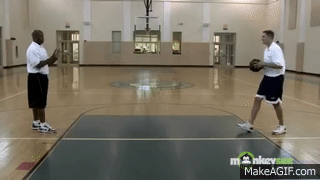Read the lesson materials below!
Motion And Forces: Unraveling the Dynamics
(Disclaimer: This is only an additional and alternative material for Motion and Forces. If you are confused, you can only remember what you learned from the Science textbook from the school.)
A. How Do We Describe The Motion Of An Object
We describe the motion of an object by considering its position, speed, and direction.
A.1. Position Of An Object
Definition:
Position refers to the specific location of an object to its surroundings. It provides a fundamental understanding of where an object is situated.
Explanation:
- Position is described using reference points and directional terms.
- Reference points help establish a standard for describing an object's location.
- Directional terms such as left, right, up, and down contribute to precise positioning.
Examples:
- The book is on the shelf to the left of the lamp.
- The cat is under the table.
A.2. Speed Of An Object
Definition:
Speed is the rate at which an object covers a certain distance in a given amount of time. It is a crucial factor in understanding how quickly or slowly objects move.
Explanation:
- Speed is calculated using the formula:
Speed (v) = Distance (s) / Time (t).
- Units* of speed include metres per second (m/s) or kilometres per hour (km/h).
- *Unit is a standard measure to represent the amount of something.
- The purpose of a unit of measurement is to provide a standard measure to represent the amount of something.
- Objects can have constant or changing speeds.
Examples:
- A car moving at 60 km/h.
 |
| Speedometer |
- A person walking at a speed of 1.5 m/s.
A.3. Direction Of An Object
Definition:
Direction in motion indicates the path along which an object is moving. It adds a dynamic element to our understanding of an object's journey.
Explanation:
- Compass directions (north, south, east, west) or relative terms (forward, backward) are used to describe direction.
- Changes in direction influence the overall motion of an object.
Examples:
- The river flows from north to south.
- The car moved forward and then turned left.
B. How Do We Measure And Represent The Motion Of An Object?
We measure the motion of an object by measuring its distance and speed, and we represent the motion of an object by using a graph (for example: a distance-time graph)
B.1. Measuring Distance
Definition:
Measuring distance involves determining how far an object has traveled. It is a fundamental aspect of understanding motion.
Explanation:
- Common tools for measuring distance include rulers, measuring tapes, and odometers.
 |
| Measuring short distances by using a ruler |
.gif) |
| Measuring long distances by using a measuring tape |
- Precision in measurement is crucial for accurate representations of motion.
Examples:
- Measuring the distance covered by a rolling ball.
- Using a ruler to measure the length of a room.
B.2. Measuring Speed
Definition:
Measuring speed involves determining how quickly or slowly an object is moving. It provides quantitative information about an object's motion.
Explanation:
- Stopwatches and timers are used to measure the time an object takes to cover a specific distance.
- The formula
Speed (v) = Distance (s) / Time (t)
is applied for precise calculations.
Examples:
- Measuring the speed of a moving toy car.
- Timing how long it takes for a person to walk a certain distance.
B.3. Representing Motion Of An Object
Definition:
Representing motion visually using graphs (for example: a distance-time graph) and diagrams helps convey complex information about an object's journey.
Explanation:
- Distance-time graphs showcase how the distance covered changes over time.
- Speed can be represented by the slope of a distance-time graph.
Examples:
- Creating a distance-time graph for a moving car.
 |
| A distance-time graph |
- Analyzing the graph of an object at rest and in motion.
C. What Is The Relationship Between Forces And Motion?
Motion depends on (1) the type of surface, (2) its mass, (3) its shape, and (4) the size of the force applied.
C.1. Motion Of An Object Depends On The Type Of Surface
Definition:
The type of surface an object moves on plays a pivotal role in determining its motion. Different surfaces offer varying levels of friction.
Explanation:
- Friction, the force resisting motion, is influenced by the texture and material of surfaces.
- Smoother surfaces typically result in less friction and smoother motion.
Examples:
- A ball rolling on a smooth, polished floor.
- A book sliding on a rough, textured surface.
C.2. Motion Of An Object Depends On Its Mass
Definition:
The mass of an object affects how it responds to applied forces. Heavier objects may require more force to set them in motion.
Explanation:
- Mass is the amount of matter in an object and is measured in kilograms.
- Newton's second law relates force, mass, and acceleration (F = m * a).
Examples:
- Pushing a heavy box compared to a lighter one.
- Observing the impact of mass on the force needed for acceleration.
C.3. Motion Of An Object Depends On Its Shape
.gif) |
| Do you want a square-wheel car? |
Definition:
The shape of an object influences how it moves through various mediums, such as air, water, or on surfaces.
Explanation:
- Streamlined or aerodynamic shapes reduce air resistance, allowing for smoother motion.
- Irregular shapes may experience more resistance.
Examples:
- Comparing the motion of a flat paper and a paper airplane.
- Observing how differently shaped objects move through water.
C.4. Motion Of An Object Depends On The Size Of The Force Applied
Definition:
The size of the force applied to an object determines the magnitude of its motion. Balanced and unbalanced forces play a role.
Explanation:
- Balanced forces result in no change in motion, while unbalanced forces cause acceleration.
- The direction of the force also impacts the motion.
Examples:
- Tugging a rope with equal force from both sides (balanced forces).
- Pushing a car to make it move (unbalanced force).
D. How Do We Measure A Force And Identify Its Direction Of Motion?
We measure a force using a force gauge or a spring balance, and we identify the force's direction of motion by observing the motion of the object or using tools like arrows to represent the force vector.
D.1. Measuring A Force
Definition:
Measuring force involves determining the magnitude of the push or pull applied to an object. This is essential in understanding the dynamics of motion.
Explanation:
- Spring balances are commonly used tools to measure force.
 |
| Spring balance |
- When the mass of the load on a spring balance is increased, the reading on the spring balance also increases.
- So, if the mass of the load on a spring balance is decreased, the reading on the spring balance decreases as well.)
- The unit of force is the newton (N).
Examples:
- Measuring the force required to lift an object using a spring balance.
- Comparing the force needed to move objects of different masses.
D.2. Direction Of Motion
Definition:
Understanding the direction of motion is crucial in predicting an object's journey accurately. Analyzing vectors helps identify the force's direction.
Explanation:
- Arrows or vector diagrams represent the direction and magnitude of forces.
- Forces can act in the same or opposite direction to the object's motion.
Examples:
- Drawing vector diagrams to represent forces on an object.
- Analyzing the impact of forces acting in different directions.
D.2.a. An Object At Rest Starts Moving
Definition:
Transitioning from a state of rest to motion involves overcoming inertia, the resistance to change in motion.
Explanation:
- Objects at rest require an applied force to initiate motion.
- Inertia depends on an object's mass.
Examples:
- Pushing a stationary car to make it start moving.
- Flicking a stationary coin to set it in motion.
D.2.b. A Moving Object Speeds Up
Definition:
Acceleration occurs when a moving object increases its speed. The force applied determines the rate of acceleration.
Explanation:
- Newton's second law (F = m * a) highlights the relationship between force, mass, and acceleration.
- Acceleration is a vector quantity, indicating both magnitude and direction.
Examples:
- Observing a car accelerating on a straight road.
- Noticing a ball rolling down an inclined plane.
D.2.c. A Moving Object Slows Down
Definition:
Deceleration or slowing down of a moving object occurs when an opposing force counters its motion.
Explanation:
- Friction and opposing forces contribute to deceleration.
- Deceleration can be gradual or abrupt.
Examples:
- Braking a bicycle to reduce its speed.
- Sliding a box across a floor until it comes to a stop.
Happy learning!
Now, let's have the homework (HW)!
Report Card
Total Questions Attempted: 0
Correct Answers: 0
Wrong Answers: 0
Percentage: 0%
Note: Capture/screenshot the report card, and submit it to Google Classroom!
Thank you for learning, my students! \^_^/












